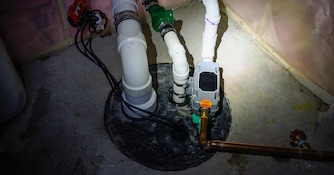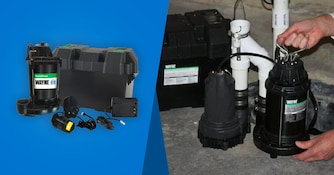
Submersible Sump Pump Buyer's Guide
Submersible sump pumps are the preferred choice for most residential applications, but not all pumps are made equal!
Submersible pumps come in multiple horsepower ratings and have different accessory options, and it can be confusing to choose between them.
This guide will explain everything you need to know to confidently choose the right submersible pump for your sump pit and ensure it's the right size for the job. After all, a properly sized sump pump saves money and hassle in the long run.
How to Properly Size a Submersible Sump Pump
There are four major factors to consider to be confident you're choosing the right submersible pump for the job. There's a saying about "bigger is better," but with sump pumps, this is not true.
Oversizing a sump pump can lead to constant cycling and premature burnout of your pump system. Under-sizing a pump can lead to the same issue, so it's important to choose a submersible pump that most closely fits the needs of your sump pit.
To properly size a submersible sump pump and safely put together a proper sump pump system, you'll need to:
- Choose the right horsepower
- Choose the right float switch
- Choose the right water alarm
- Choose a backup sump pump system
How to Choose the Right Horsepower (HP) for Sump Pumps
Horsepower is the most important factor when determining which sump pump is best for your application, and it's used to determine how much power your pump can produce to empty your sump pit through the discharge piping.
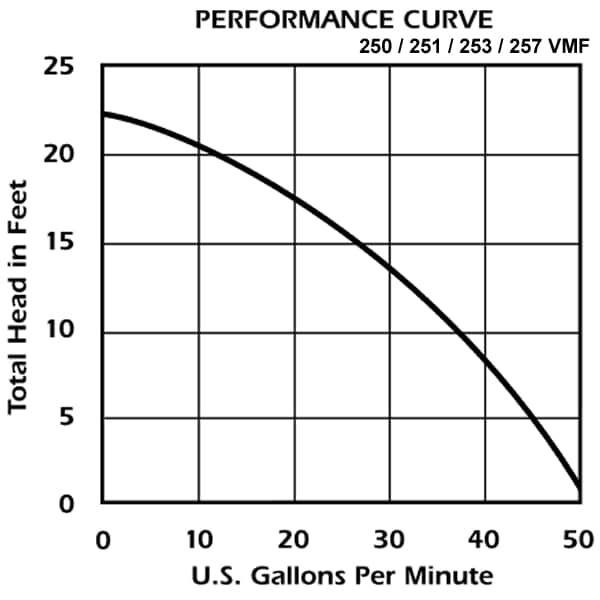
It's important to understand that each submersible sump pump has its own pump curve and recommended uses, so make sure to check the specifications of the pump to make sure it's going to work for you since total pump output can vary between manufacturers. This information can be found for each pump on our product pages.
If you're replacing a previous pump, typically you should stick to the same horsepower (HP) rating as your old pump unless you experienced any issues with that pump before it failed. Every sump pump has a data plate that can be checked to determine all the most important pump information, including HP ratings and model number for reference.
If you can't locate the information or can't find your user manual, we have a manual lookup tool you can use to find your old pump's manual.
1/3 HP Submersible Sump Pumps
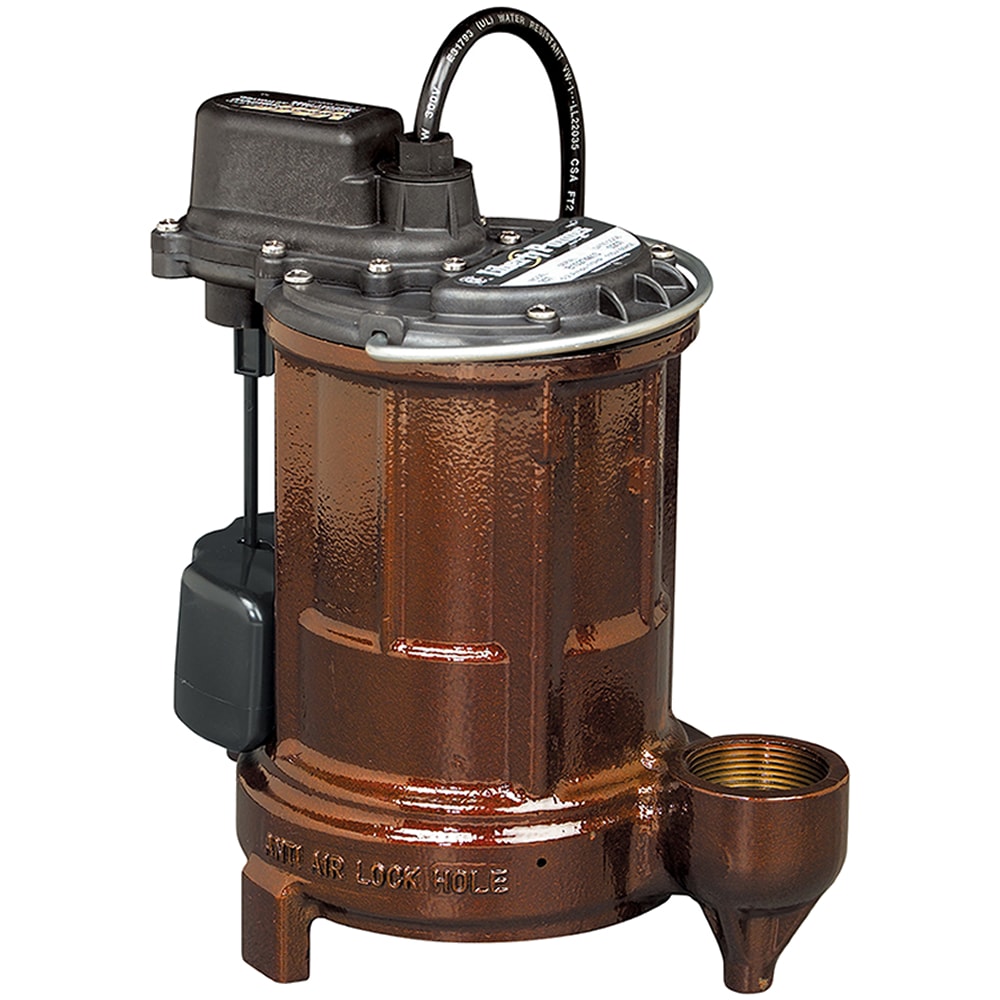 For most average-sized homes in areas with average water tables, a 1/3 HP sump pump should be sufficient. Typically, 1/3 HP pumps can handle 7' - 10' vertical lifts from the sump pit if they have one 90-degree elbow and a horizontal pipe run between 3 feet and 25 feet.
For most average-sized homes in areas with average water tables, a 1/3 HP sump pump should be sufficient. Typically, 1/3 HP pumps can handle 7' - 10' vertical lifts from the sump pit if they have one 90-degree elbow and a horizontal pipe run between 3 feet and 25 feet.
1/2 HP Submersible Sump Pumps
If you live in an average-sized home with an above-average water table, you will most likely need a 1/2 HP sump pump. These pumps will generally pump about 35%-40% more than their 1/3 HP counterparts, and can also handle higher vertical lifts for water being pumped through your discharge pipe.
When you have a slightly higher vertical lift (10-15 feet) or a long horizontal run (example: 30-150 feet), you may notice a loss of water flow due to the increased friction from the longer runs. For those conditions, you may need a higher pumping capacity (HP and GPH) to overcome that loss.
3/4 HP - 1 HP Submersible Sump Pumps
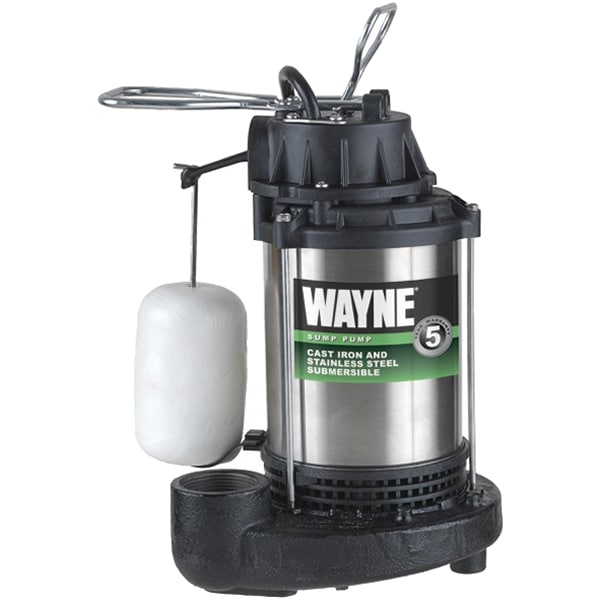 For people living in high water table areas, flood plains, low-lying areas susceptible to flooding, or have a deeper basement, you will likely need a stronger 3/4 HP sump pump
For people living in high water table areas, flood plains, low-lying areas susceptible to flooding, or have a deeper basement, you will likely need a stronger 3/4 HP sump pump
or a 1 HP sump pump.
These pumps will generally provide a 20% - 25% increase in pumping capacity over a 1/2HP sump pump. In addition, if you have an installation where you need a high vertical lift or head (20-30 feet) and/or a long horizontal run (150-250 feet), 3/4 - 1 HP pumps provide the additional power needed to pump that water. These higher-output sump pumps are also ideal for outdoor pump applications.
When dealing with higher GPM and longer pumping distances, special attention needs to be placed on choosing a proper discharge pipe diameter to prevent problems with higher-powered pumps.
Wifi Submersible Sump Pumps and Accessories
Float switches, water alarms, and backup pumps are all necessary to prevent your basement from flooding, which is why you need a sump pump in the first place.
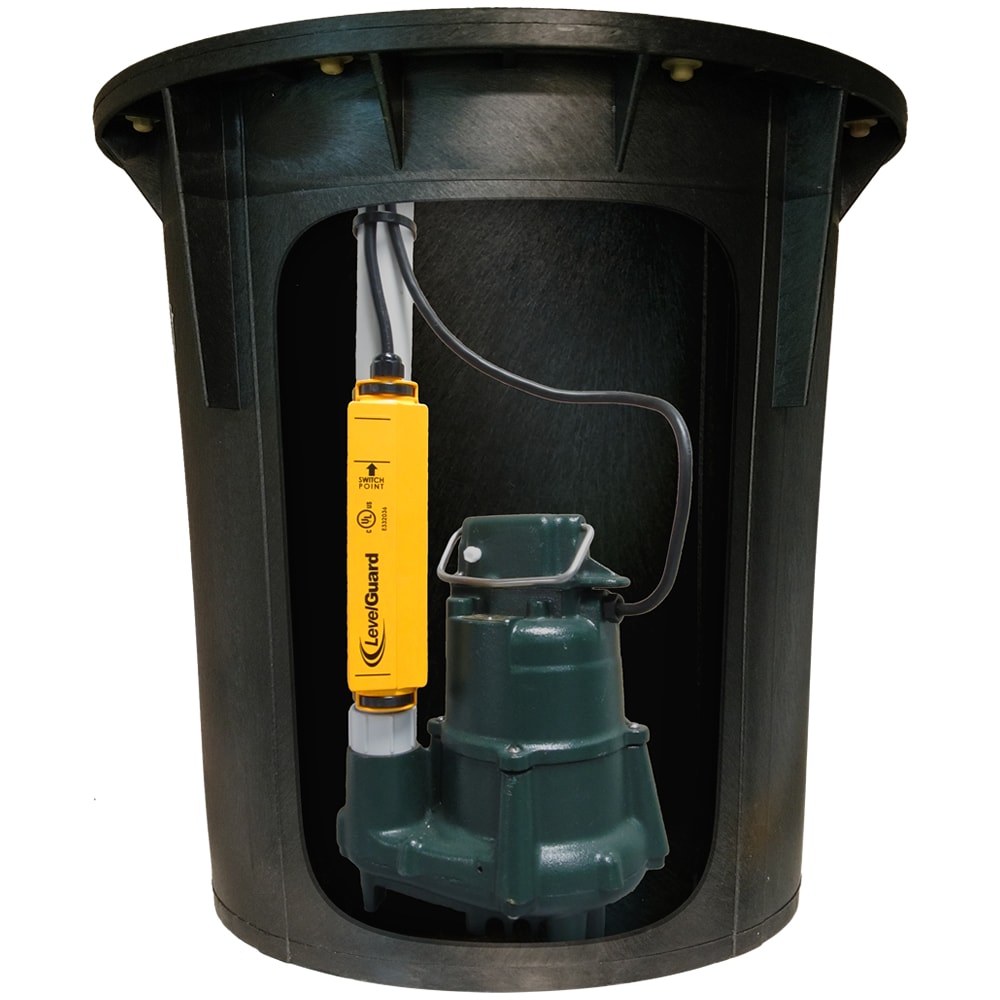 Most sump pumps will come with a float switch, or you can purchase a replacement separately. We recommend electronic float switches because they take up less space in your sump pit and are the most reliable switches on the market.
Most sump pumps will come with a float switch, or you can purchase a replacement separately. We recommend electronic float switches because they take up less space in your sump pit and are the most reliable switches on the market.
With water alarm systems, wifi-enabled kits can be purchased that connect to your sump pump and call, text, or email you if anything is going wrong with your sump pit. They are extremely useful to have because a regular beeping water alarm won't do much good if no one is home to hear it.
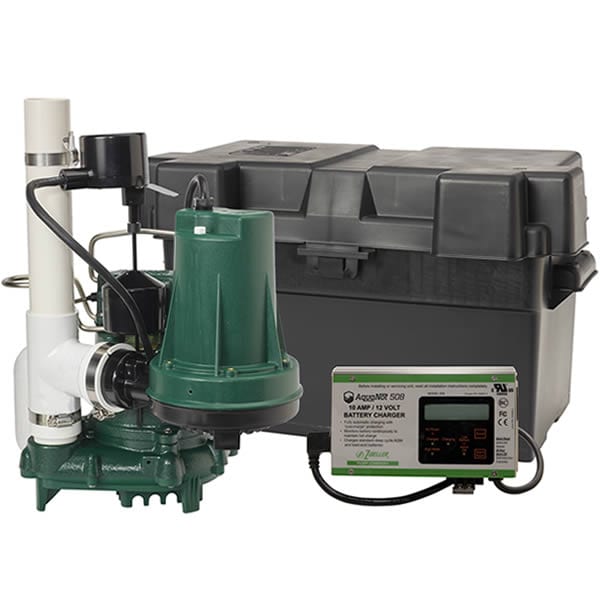 Backup sump pump systems are your only hope of preventing a flood if you lose primary power at home and don't have a generator standing by. You can buy a backup sump pump system separately, or get one included with your primary pump by getting a combination sump pump system.
Backup sump pump systems are your only hope of preventing a flood if you lose primary power at home and don't have a generator standing by. You can buy a backup sump pump system separately, or get one included with your primary pump by getting a combination sump pump system.
The Best Submersible Sump Pumps
We take pride in looking for the best of the best submersible pumps on the market. Not only that, but we also compiled lists of the top-selling, highest-rated, and expert-recommended submersible pumps that real customers have purchased, used, and reviewed. Take a look below and see the best submersible pumps of the year, which are updated in real-time.
![]()
NEXT:
The Best Primary Submersible Sump Pumps


